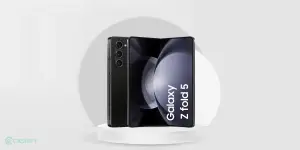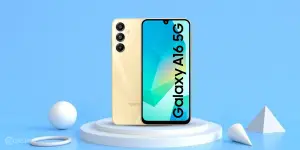Picking the best RAM for your PC depends on many critical considerations, including what you intend to accomplish with it and with what other components you’ll use it. While buying a new PC, RAM may not be as exciting as other components. Still, it has the most significant impact on system performance after the processor and graphics card. If you don’t have enough memory or the type you choose isn’t fast enough, your CPU and storage will suffer, and you’ll have a disappointing experience. So, do you wish to upgrade your RAM? We’ll go over everything you need to know about picking the best RAM for your PC, making the most of your money, and maximising performance in this guide.
Also Read: 5 Best Phone Clone Apps To Transfer Data From Android To iPhone
What do you understand by RAM?
Random Access Memory (RAM), or just memory as it’s more commonly known, is a super-fast form of volatile storage.
That is to say, it forgets whatever it has saved when the power is turned off. What distinguishes it from longer-term storage options such as hard drives and solid-state drives (SSD), which can keep your data for years at a time even when powered down. RAM is also physically distinct from other types of storage.
A PCB (printed circuit board) connected memory chip is the most cost-effective RAM. Pricier models have metallic heat spreaders and heatsinks for cooling, while some include LED lights and other aesthetic upgrades. Since it has a direct link to the motherboard, RAM is much faster than longer-term storage as it eliminates any latency caused by cables or headers. As a result, picking the best RAM can serve as a large cache for the most crucial data required by the CPU and other components.
It prevents the CPU from having to dip into slower, longer-term storage, which could cause system slowdowns, by offering high-speed access to everything your PC needs at a moment’s notice.
Also Read: Where to Buy Xbox Series X in India?
Why is RAM important for your PC?
We already know that it’s used to store essential data that the CPU or GPU needs to access rapidly. As a result, it is crucial for effective multitasking, such as keeping many programmes open simultaneously and running smoothly. In terms of gaming, it stores all of the necessary assets for the game to access quickly.
Important RAM Specs
Capacity: This is measured in gigabytes (GB). The more the capacity, the more data applications can store. More apps can constantly operate at a higher capacity, and games can store more temporary data.
Speed: Speed is measured in mega transfers per second (MT/s), but it is not the same as clock speed. Higher speed ratings indicate a quicker response time to read and write requests and hence better performance.
Also read: WhatsApp Brings Two Safety Features in India: Check Details Here
Choosing the right type of DDR
Modern RAM is DDR SDRAM, and over the last two decades, the computer has gone through four generations: DDR, DDR2, DDR3, and DDR4.
Most modern machines use fourth-generation DDR4, which became widely available in 2016. In the meantime, DDR3 memory and DDR3-compatible motherboards are still available, but DDR3 is rapidly becoming outdated.
Without getting into the nitty-gritty details, let’s say that DDR4 is substantially quicker than DDR3 and is an improvement in almost every manner.
So if you’re looking forward to upgrading your RAM, you must know that DDR4 isn’t compatible with older motherboards and CPUs, and DDR3 isn’t compatible with newer ones. As a result, DDR4 will not work on an older DDR3-compatible motherboard, and DDR3 will not work on a newer DDR4-compatible motherboard.
Read Also: Redmi Smart Band Pro Launched in India: Find Out Features, Pricing Here
RAM compatibility issues you should be aware of
Not all RAM is suitable for all systems. When evaluating a memory kit’s compatibility and choosing the best RAM while upgrading, keep the following in mind:
1. DDR Generation
DDR generation is crucial since older DDR memory will not function with newer generation DDR memory and vice versa. DDR3 memory cannot be used in a motherboard with DDR4 DIMM slots, and DDR4 memory cannot be used in a motherboard with DDR3 DIMM slots.
2. Motherboard DIMM Slots
When it comes to Motherboard DIMM slots, it’s also crucial to keep track of how many slots your motherboard contains. Some micro-ATX and mini-ITX motherboards only have two DIMM slots. So, a 4x4GB memory kit will not fit. In that case, you can have no more than two RAM sticks. As a result, ensure you don’t buy more RAM than your motherboard can support.
3. CPU Heatsink Clearance
Compatibility concerns with some CPU heatsinks have also been reported with specific memory kits. Air CPU coolers that are large and heavy dangle over DIMM slots. They can also hinder memory kits with tall heat spreaders from being installed in some cases. It’s a good idea to double-check that your air cooler won’t interfere with your RAM. If you choose a substantial, bulky air cooler and RAM with tall heat spreaders.
4. Form Factor
Another issue to consider is the RAM form factor. There are only two types of RAM available:
- DIMM: desktop form factor
- SO-DIMM: laptop form factor
All you need to know is that if you’re creating a new desktop PC or upgrading an existing one, you’ll want to use DIMM form-factor RAM rather than SO-DIMM RAM because desktop motherboards aren’t compatible with SO-DIMM memory.
Also read: OnePlus RT India Moniker Confirmed Via Amazon Ad; Check Details Here
Factors to consider before buying a RAM
Frequency
Only particular RAM frequencies, such as DDR3 1600MHz, will be accepted by your motherboard. If you choose a quicker memory, you’ll have to run it at a reduced speed, or it won’t work at all. If you decide on slower memory, your system’s performance will suffer. As a general rule, higher frequency equals better performance, but timings and other parameters also play a role.
Voltage
Some RAM will demand a higher voltage than the industry norm. If so much voltage is required, make sure your motherboard can handle it. With overclocking, voltage rises are also typical. With Core i7 CPUs, it is not suggested to utilise more than 1.65V on the RAM since you risk harming the processor.
Timings
The delay between specific commands executed by your computer memory subsystem is called timings or latencies. To keep things simple, remember that shorter durations are better because they minimise latency and improve bandwidth.
Memory requirements
Memory requirements for picking the best RAM depends entirely on your needs, but we usually recommend at least 3GB for any machine and 4GB for a high-performance system. If a user wants to play recent games, a minimum of 4GB to 6GB RAM is required. The more RAM you have, the better, especially with RAM prices so low right now.
If a user is constructing a new system, 8GB RAM has become the industry standard. However, if the user is designing a gaming PC, 16GB to 32GB RAM should suffice. If you’re designing a PC for production work, we’d recommend 32GB or perhaps more to ensure that programs load quickly.
64 bit or 32 bit
32-bit operating systems can only address a total of 4GB of computer memory, which includes the memory on your video card as well as the RAM in your CPU. If you plan to use more than 4GB of RAM, you’ll need to use a 64-bit operating system to utilise your memory fully.
Warranty
Some manufacturers offer a lifetime warranty. Some warranties allow you to increase the voltage. When you reuse RAM after a few years, it becomes faulty. Thus, it’s best to get it from a vendor who offers a painless and straightforward RAM process.
Also read: iQOO 8 Series India Launch Cancelled: Leaks.
Which RAM you need for your PC?
RAM is a relatively straightforward component to select for your system. The amount of RAM you should purchase is determined by your budget. If you’re on a limited budget, stick with 8GB of RAM until you can afford to upgrade. Else go for 16GB if you have a considerable budget (or more).
Then, depending on your individual use case, you might want to invest a bit extra (if your budget allows) to purchase faster RAM.
Also read: WhatsApp Brings Two Safety Features in India: Check Details Here
Closing Thoughts
While various models can potentially be swapped out, it is not suggested. Combining RAM modules from different manufacturers can result in unforeseen compatibility difficulties, crashes, and general sluggish performance.
Furthermore, if you use modules with varying clock speeds, the speed of the slowest one will be applied to all of them.
To recap, emphasise capacity over speed and latency, choose kits over individual high-capacity modules, leave extension room if necessary/possible, and avoid mixing and matching different models if you decide to upgrade your RAM later.
Read Also: Redmi Smart Band Pro Launched in India: Find Out Features, Pricing Here
















